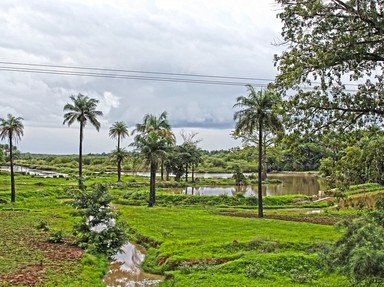Quiz Answer Key and Fun Facts
1. You could enter The Gambia via plane, boat or car (but not a train). There is only one airport though and it's in the capital of Banjul.
True or false: The airstrip in Banjul was once designated as an emergency landing strip for the Space Shuttle.
2. 'Ky len nu rerr.' If you hear this, you've been invited to dinner with a Gambian family. At dinner, you're served a local dish called domoda. It's a beef and rice dish which features an ingredient used extensively in Gambian cuisine. Which ingredient is this?
3. English is the national language of The Gambia but indigenous languages are still spoken. Which of these languages or dialects is NOT commonly heard in The Gambia?
4. The majority of The Gambia's population is Muslim with a small minority being Christians of varying denominations. A small portion of the population adheres to indigenous faiths including which of these?
5. If you're after a bit of sport while on holidays, you might like to watch combatants pit their prowess against each other in the nation's national sport. What is The Gambia's nation sport?
6. In 2013, a programme was launched with support from the British High Commission in The Gambia. It was designed to promote the welfare of women. Improvement in which sphere of life was the target of this programme?
7. The largest ethnic group in The Gambia is the Mandinka people. From which empire did the Mandinka people originate?
8. Beware, Gambian children! In the swamps of the Gambia River lives a monster who is very dangerous. Part of West African folklore, what type of monster is the 'Ninki Nanka' said to be?
9. The River Gambia National Park has a stated mission to rehabilitate a particular African animal back into the wild. Which animal is being returned to the African forests?
10. Situated in the middle of the Gambia River is an island which has become a UNESCO World Heritage Site because of its role in European colonisation of Africa and in the slave trade. Formerly named James Island, the name has been changed to reflect its history and is now known as what?
Source: Author
Tizzabelle
This quiz was reviewed by FunTrivia editor
Pagiedamon before going online.
Any errors found in FunTrivia content are routinely corrected through our feedback system.

